
All photos by the author.


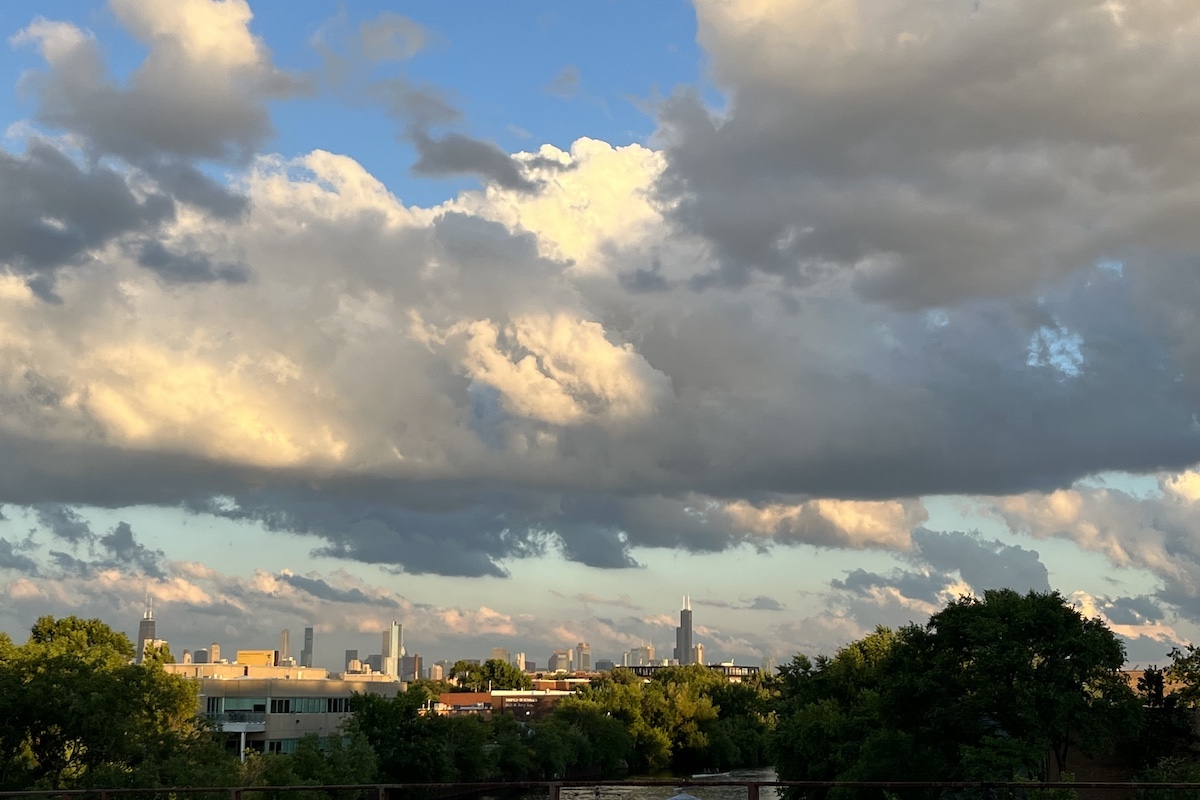
All photos by the author.
My favorite walk in Chicago is 2 miles long and parallel to the Chicago River. These days, the river seems to get the most attention when, once a year, the city dyes it green, to celebrate St. Patrick’s Day. I have explored many parts of this 156-mile-long river but my favorite is a trail that stretches between Belmont and Montrose, it is as familiar to me as waking up to chai at my parents’ house.
I am fortunate to live in Chicago and have access to such nature. Such access feels increasingly precious and rare. Apartment complexes seem to rise up overnight, butting right up to the water’s edge, destroying the places where nature existed. No second thought about what we have taken away. To me, this river is a long, winding kitchen table, where all of life comes together. It is where migrating warblers sing, where barn swallows play, where red-eared turtles rest and monarchs dance.

For me, the river is a place deserving utmost respect.
In full transparency, I pay more attention to nature than many people and tend to stop repeatedly to observe a plant, bug or bird. If you are my sisters, then this can be either incredibly frustrating or amazing—it all depends on the find and how long we have been walking.
I have always loved plants. I got this from my mum who got it from her mum. I remember my grandmother in her garden, tending to her lime tree while shooing away the gray langurs that would visit every morning. However, my fascination with native plants began when I started volunteering as a land steward. My world opened up to plants that I never knew existed. Native plants have an ingenuity in their structure that is the result of coexisting with the land. I have the same sense of excitement when I come upon late summer side oats grama grasses. The shade of red on the anthers is stunning but so is the structure of the plant, with each anther delicately dangling by an invisible thread.
Brilliant.
In the Chicagoland area, exist prairies and woodlands. This is a sharp contrast when compared to other parts of the country. When I visit my sister in Phoenix, I am on desert land surrounded by exploding pink mountains and giant Saguaro cacti. Along the California coast, meanwhile, the ancient redwood trees hold secrets from the beginning of time. Still, for all the drama of the mountains and wisdom of the trees, my heart belongs to the understated and subtle beauty of the prairies and woodlands.
I digress.
My walk begins on Belmont, from the bridge that crosses over the river, with a dramatic juxtaposition of two views. To the southeast, I have an unobstructed view of the iconic skyline with its breathtaking skyscrapers—a reminder of the richness of this city. Only once during the summer of the Canadian wildfires did I not see the skyline. It had completely disappeared, sitting underneath a thick blanket of smog. It felt unsettling for it to be gone—for even on the foggiest days there is still a trace of those iconic structures.
I turn 180 degrees away from the skyline and toward the northwest. Everything changes. The river widens. Tree branches with lush green leaves skim the water. Gulls fly overhead. On the horizon, there is no city skyline, just the line where the sky and water meet.
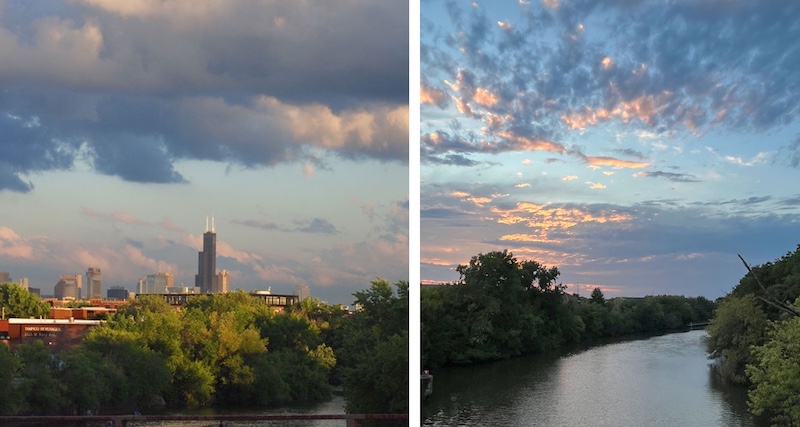
On the east side of the bridge, I turn onto a ramp that descends to the river trail. In early spring, the fragrance from the black locust blossoms carries through the air. Oak, maple and locust trees border the trail providing shade from the sun. I peek through. There, on the other side is a great blue heron resting on its favorite spot. This is the first of the three such herons typically found on this trail.
As I keep walking, I see a robin pecking and hear geese honking in the distance.
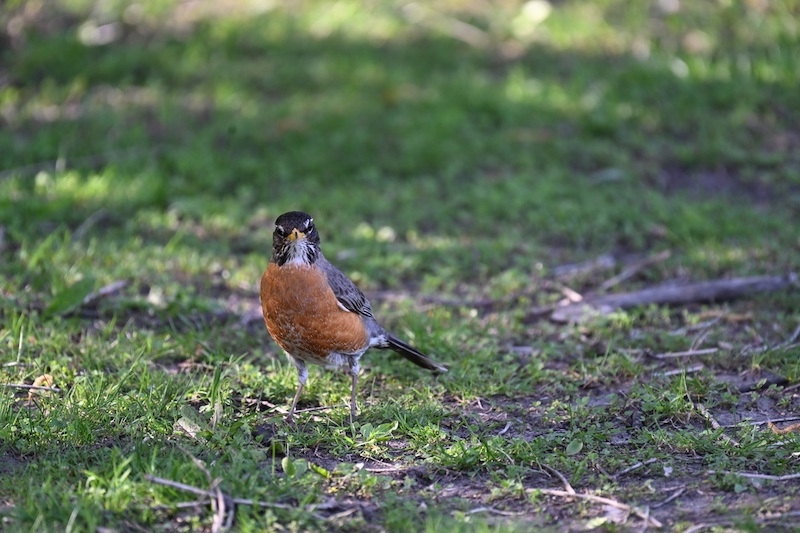
During spring, the migrant birds are present. A playful golden-crowned kinglet keeps me company as I move closer to the riverbank. Like clockwork, as the days grow longer I see red-eared sliders piled on top of each other sunbathe on logs. The roots of the trees jut out from the ground; I must watch my step. But that is no easy task—more than once I catch myself. My eyes are drawn back up by the sight of another heron, a green heron this time, quietly camouflaged and right in front of me. I have never seen one so close. The feathers are deep red and blue but not green.
I reach the end of the woods which in the summer are bordered with towering Joe-Pye weeds, coneflowers and goldenrods. The path opens. Just ahead is a floating dock in the water. Though meant for kayaks it is just as often used by birds. I remember a walk with my mum and sister when we saw a pair of double-crested cormorants sitting with their massive wings spread out to dry and one green heron standing conspicuously amongst a crowd of geese. It was my sister who pointed out the odd fellow. The Sesame Street song, “One of these things is not like the other,” came to mind.
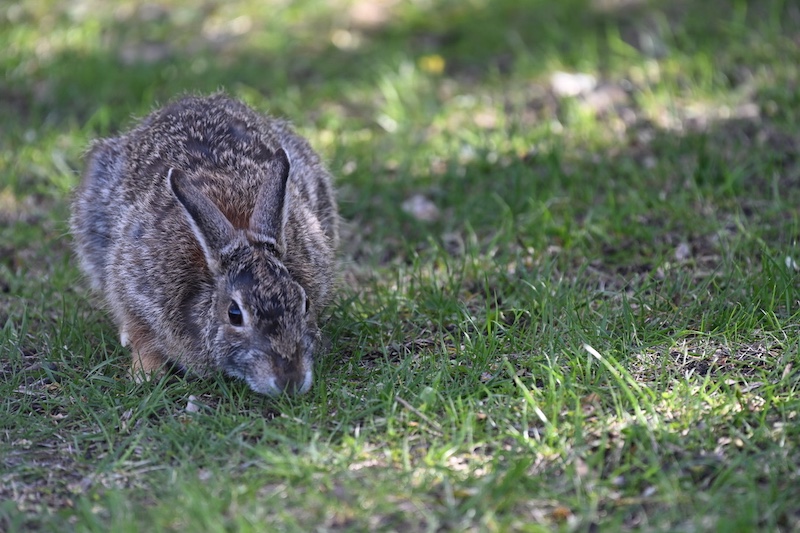
Next, the trail passes through Clark Park; it is filled with loud children and happy dogs. Many years ago, I crossed paths with a beautiful coyote. Our eyes met and then he sauntered toward the river. These days, I mostly see rabbits and squirrels. Last summer, though, I saw a northern flicker foraging underneath a tree. Its plumage had many different colors and patterns—bright red behind the neck; coral pink, bluish-gray and earth orange around its face; black and tawny polka dots and stripes across its body; and, finally, a black patch in the shape of a breastplate on its chest. All these mismatched colors and patterns should not have worked but somehow the color scheme was beautifully cohesive.
From Clark Park, a wide, meandering footbridge crosses the river, passing under Addison Street bridge along the way. A great blue heron stands partially obscured by leaves on the opposite side of the river. In its midst, iridescent blue and gold barn swallows shimmer in the sun as the dive straight down, floating for a second above the water before dramatically flying upward.
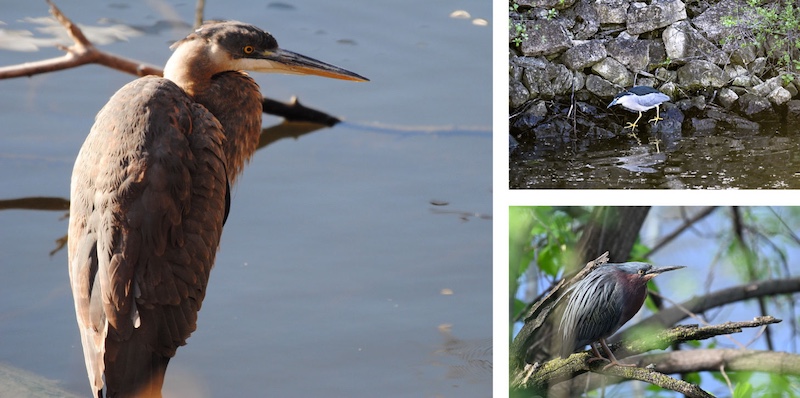
I walk through the underpass where a third great blue heron greets me on the other side. It is sitting on a bare branch hanging over the river. This heron always has a crowd of admirers. Once with my dad, we stopped but it paid no attention to us and seemed to be in a deep meditative state. When a large shadow passed over us, though, the three of us all looked up, my dad, the heron and I. A hawk was passing overhead. Majestically, the great blue heron raised its long neck towards the predator and intently followed its movement, returning to a state of rest when the hawk disappeared.
Downstream from the bridge I see a black-crowned night heron gracefully climbing jagged rocks submerged along the edge of the river. The white breeding-season plumes hang from the back of its head.
I reach the end of the bridge, passing a noisy tennis court and a dusty sign:

Chicago Park District
This Nature Area
has been designated as a
Bird & Butterfly
Sanctuary
The trail passes by a tiny restored native prairie plot where prairie smoke grows. I pause to admire the long, wispy seedheads. The red and white puffs top a plant new to me.
I walk down a set of stairs at Horner Park that brings me to an unpaved narrow muddy path through prairies that abut the river. Much quieter and a bit wild, this area is like entering a new world. There are flowers as far as I can see—false white indigos, wild bergamots, prairie phloxes, milkweeds, butterfly weeds, purple coneflowers, black-eyed Susans, spiderworts, asters, goldenrods and purple prairie clovers, to name a few. Black swallowtails, red admirals, monarchs, pearl crescents, American painted ladies, alfalfa butterflies, fiery skippers, common buckeyes and cabbages are among the butterflies visiting the flowers. An assortment of bees have full pollen baskets of different colors.
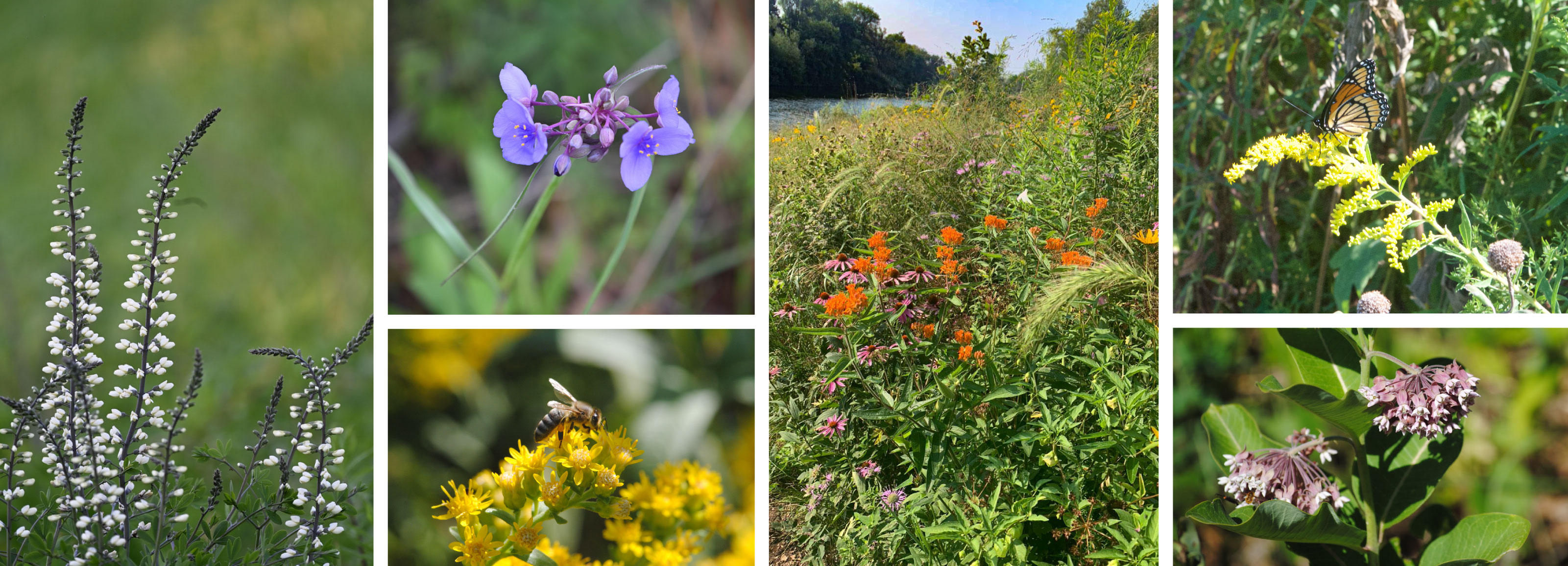
Deeper in the trail, I am startled by a garter snake. I watch it flicks its red tongue, sensing its environment. Skirting the snake, I enter a swampy area which became popular with the birders one year when a sora showed up for a few days. Totally oblivious to the paparazzi, it walked in and out of the grasses in a figure eight.
I walk up the stone stairs to the mainland, where the ground is stained red and purple from berries fallen from blackberry bushes. Hidden among the vegetation are red columbines and a wild strawberry patch. A red-tailed hawk once whooshed passed me, landing on a branch where it stayed a couple of minutes until flying away.
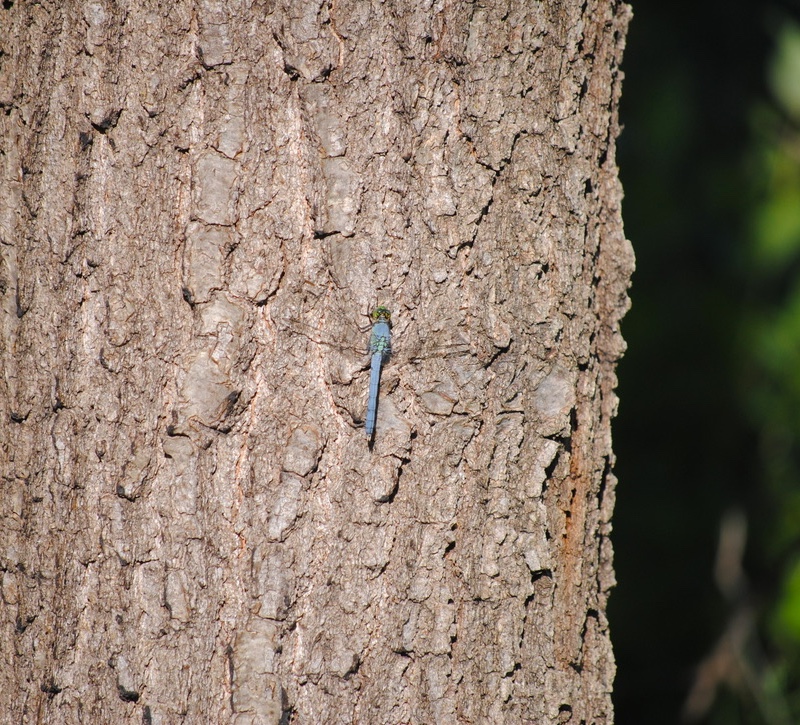
Further down the trail another set of stair leads back down to the river. A kingfisher flies over the river. The water ripples in concentric circles as a family of mallard swims through. Unexpectedly, I walk into a cloud of pond hawk dragonflies. They weave around me like miniature vibrant helicopters…to be so close to them feels magical.
I reach the end of this trail. Within these two miles I have had an unspoken kinship with Chicago’s natural world. For a moment in time I am a spectator, observing and in awe that I can share this space with them.
I do not take this for granted.
Sima Dinesh Shah is an illustrator, printmaker and nature journalist. She resides in Chicago. In 2020, Shah received her certificate in Traditional Botanical Art from the Chicago Botanic Garden. She is a novice but avid birdwatcher, hiker and native plant enthusiast. You can learn more about Sima and her work on her website.
Submit a question for the author
Question: Love it!